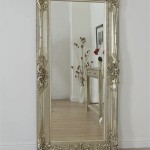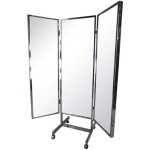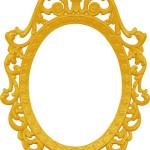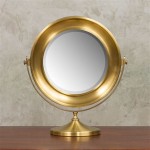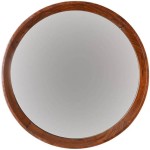Removing Wall Mirrors Glued to the Wall: A Comprehensive Guide
Wall mirrors, when properly installed, enhance a room's aesthetics and functionality. However, situations arise where you might need to remove a mirror that was glued to the wall. This can be due to a change in décor, a move, or simply a desire for a fresh look. Removing a glued mirror requires a strategic approach to avoid damaging the wall or the mirror itself. This guide will equip you with the knowledge and techniques to safely and effectively detach a glued mirror from your wall.
Understanding the Adhesive
The adhesive used for wall mirrors can vary, but common types include construction adhesive, epoxy, or industrial-grade glue. Each adhesive possesses unique properties that influence the removal process. Construction adhesive, often used for heavy mirrors, tends to be more resilient and requires additional effort to remove, while epoxy is known for its strong bond, making it the most challenging to detach. Industrial-grade glue, typically employed for commercial installations, can also present a significant challenge due to its robust bonding strength.
Preparing for the Removal
Before embarking on the removal process, it's essential to gather the necessary tools and supplies. These include:
- Safety Glasses: Protect your eyes from debris and flying shards.
- Gloves: Protect your hands from the adhesive and potential sharp edges.
- Utility Knife: A sharp utility knife will be helpful for cutting through adhesive and separating the mirror from the wall.
- Heat Gun or Hair Dryer: Heat can soften some adhesives, making removal easier.
- Putty Knife or Scraper: These tools will help pry the mirror away from the wall.
- Adhesive Remover: This specialized solution can effectively dissolve certain adhesive types.
- Cleaning Supplies: You'll need cleaning agents to remove any remaining adhesive residue.
Once you have the necessary tools, it's important to assess the mirror's size and weight. Larger or heavier mirrors will require additional caution and potentially more tools to prevent damage.
Step-by-Step Removal Process
The removal process for a glued mirror can be divided into these steps:
1. Prepare the Mirror
Begin by carefully inspecting the mirror for any cracks or damage. If cracks are present, it's crucial to exercise extra caution during removal to avoid shattering. Cover the mirror's surface with a protective layer using painter's tape or masking paper to prevent scratches and protect against accidental damage.
2. Apply Heat
Apply a gentle heat source, such as a heat gun or hairdryer, to the edges of the mirror. Heat can soften the adhesive, making it more pliable and easier to work with. Be cautious not to overheat the mirror, as this could cause it to shatter.
3. Cut the Adhesive
Once the adhesive has softened, use a sharp utility knife to carefully cut through the adhesive along the edges of the mirror. This helps to separate the mirror from the wall and create a path for the scraper.
4. Pry the Mirror Away
Gently insert a putty knife or scraper between the mirror and the wall, working slowly and carefully. Use a gentle prying motion to lift the mirror away from the wall, but avoid excessive force to prevent damage. If the mirror is attached with construction adhesive, you might need to apply additional heat and use a chisel to pry it away.
5. Remove Residual Adhesive
Once the mirror is completely removed, apply adhesive remover to the remaining adhesive residue on the wall. Allow the remover to sit for a few minutes according to the manufacturer's instructions. Then, use a scraper or putty knife to remove the softened adhesive. Repeat as needed until the wall is clean.
6. Clean the Wall
After removing the adhesive residue, clean the wall surface thoroughly with a damp cloth and mild detergent. Allow the wall to dry completely before applying any paint or wallpaper.
7. Dispose of the Mirror
Dispose of the mirror appropriately. If it's cracked or damaged, it should be wrapped in thick protective material and discarded in a designated recycling bin. If the mirror is still intact, you can find a local glass recycling facility for proper disposal.
Important Considerations
When removing a glued mirror, it's essential to consider these factors:
- Wall Type: Different wall materials, such as drywall, plaster, or concrete, require varying techniques and tools for adhesive removal.
- Mirror Size and Weight: Larger and heavier mirrors pose a higher risk of damage and require additional assistance during removal.
- Adhesive Type: Different adhesives have varying levels of bonding strength, requiring appropriate removal procedures. If you're unsure of the type of adhesive used, it's always wise to consult with a professional before attempting removal.
If you're unsure or uncomfortable removing a glued mirror yourself, it's always advisable to contact a professional handyman or contractor. They possess the expertise and tools to safely and efficiently remove the mirror without causing any damage to your wall or the mirror itself.

How To Remove A Mirror Glued The Wall Forbes Home

How To Remove A Wall Mirror 11 Steps With Pictures Wikihow

How To Remove A Mirror Glued The Wall With Mastic

How To Remove A Bathroom Mirror 9 Steps With Pictures Wikihow

How To Remove A Large Mirror That S Glued The Wall Emerging Home

How To Remove A Mirror Glued The Wall Tiff W On Creek Blog
:strip_icc()/Design_CathieHongInteriorsPhoto_ChristyQPhotography-b2290decbe0e4d0b952f280fb7bdc896.jpg?strip=all)
How To Remove A Bathroom Mirror From The Wall

Easy Way To Safely Remove A Mirror Glued The Wall

How To Remove A Wall Mirror 11 Steps With Pictures Wikihow

How To Remove A Builder Grade Mirror Signed Samantha

